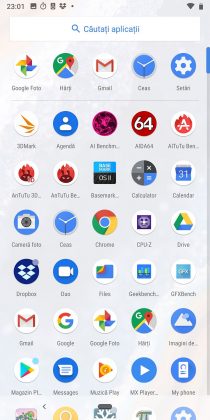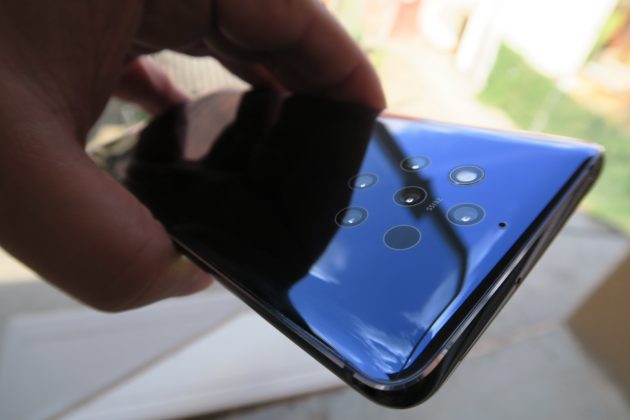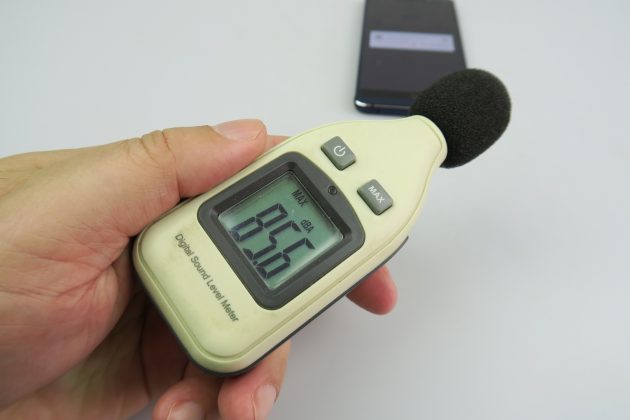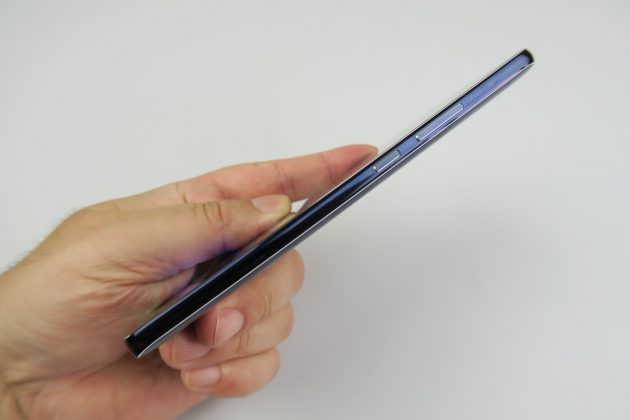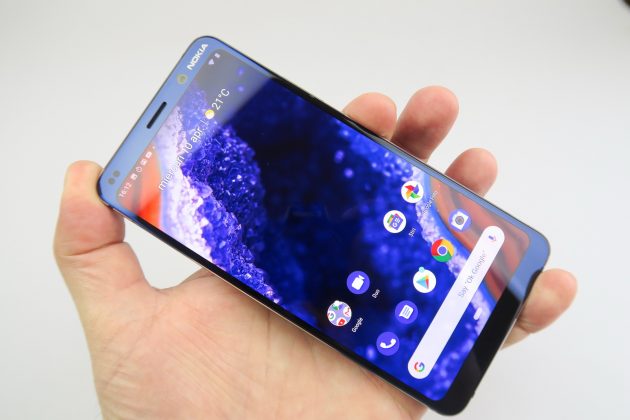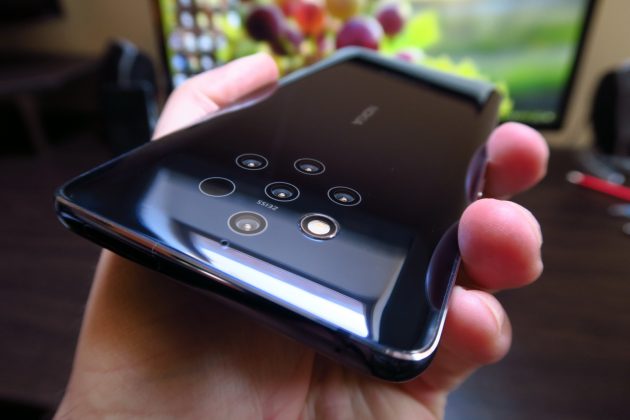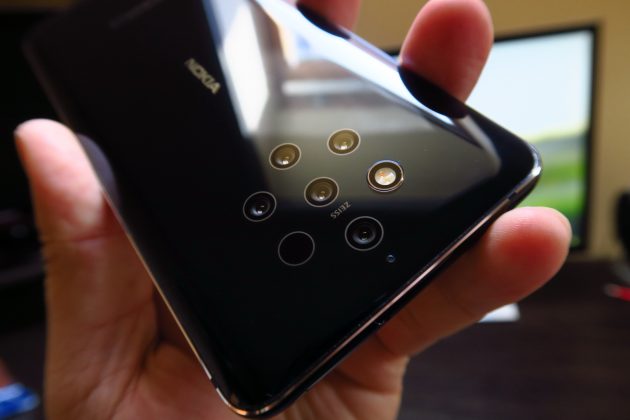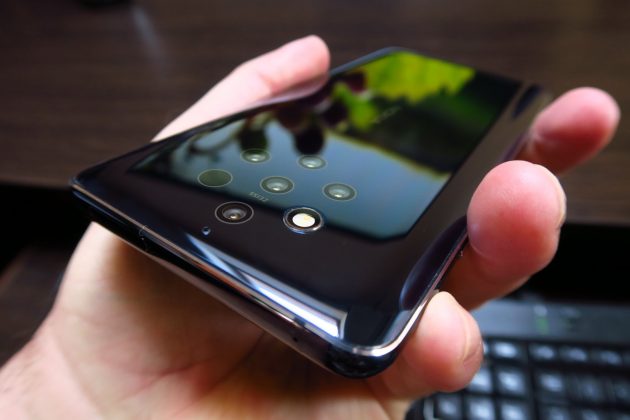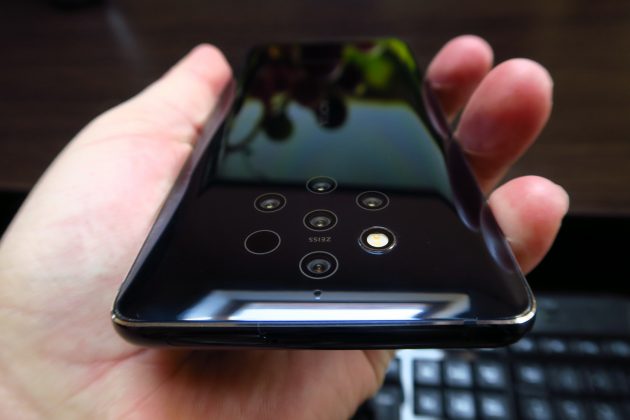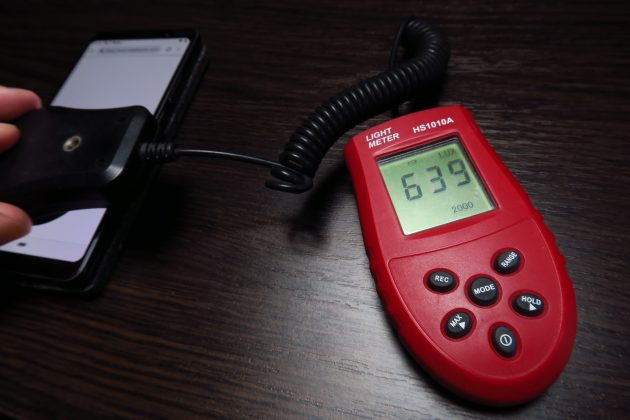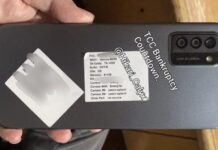Nokia 9 Pureview was probably the hottest phone unveiled at MWC 2019. There was a lot of hype surrounding it, between the thripophobia jokes and the promise of a pairing of Light and Zeiss technology. It’s also the return of Pureview after quite a few years. There were some compromises made in order to instantly make the device popular, like giving it a Snapdragon 845 CPU and a lower price of $699. It’s probably $499 right now… It’s been 7 years since the Symbian Pureview and in some ways that one was much more impressive than the Nokia 9 Pureview. Let’s see why.
Design
On the design front, I have to say that the smartphone is hugely slippery, possibly the most slippery phone of 2019. The back side is a fingerprint and grease magnet, but less than expected. A case would be a good idea. The main achievement design-wise is that there are 5 cameras here, but no protrusion. The back side is elegant and I love the deep blue hue.

Nokia 9 Pureview is made of glass and metal and it’s got a pretty generic facade, with a huge chin and “forehead”, that feel like a throwback to the Nokia 8. The handset has aluminum series 6000 for the frame and Gorilla Glass 5 for protection. Buttons are rather comfy and dimensions are OK: 8.4 mm in thickness and 172 grams in weight.
At 5.99 inches in diagonal, this phone feels a bit small by modern requirements. I love the symmetry of the cameras and the “spider eyes” don’t bother me. I should also mention the IP67 waterproofing and overall it’s a nice looking phone, but only from the back.

Display
Nokia 9 Pureview has a 5.99 inch P-OLED screen with a Quad HD+ resolution. It has big bezels and the actual resolution is 2880 x 1440 pixels. There’s a 18:9 aspect here and HDR10 support. The viewing experience, I mean movies and games brought us well calibrated colors (very vivid), wide view angles and a solid brightness and contrast.

Blacks are deep and there’s no longer a problem with gray/blue sides like on the Nokia 8 Sirocco. The curse of the P-OLED is finally gone! We put the screen under the microscope and found Pentile Matrix pixels. We also did a luxmeter test and achieved an impressive result: 639 LUX units. It’s a top level result for sure and it surpasses the Huawei P30 Pro and Galaxy S10+, but scores below the iPhone XS Max and iPhone X.
There are also settings to tweak, like brightness, Night Light, Adaptive Brightness and there’s also an area called Pure Display, where you can select options like Dynamic, Vivid, Cinema and Basic. You can also tweak the font and display size, plus there’s the Always On Display called Glance here. Seeing how you’re in for a disappointment in the camera area, the screen sounds like a selling point for me.

Hardware
This flagship made some compromises for a lower price, like the inclusion of a Qualcomm Snapdragon 845 processor, 6 GB of RAM and 128 GB of storage. There’s no microSD card slot, which is odd, since Nokia bragged about working with big RAW files on the device. There’s no lag of course, at least in regular use and any game you can imagine works like a charm here.
The only lag appears in the camera UI. We also did some benchmarks and in AnTuTu 7 we surpassed the Huawei P30 Pro, Razer Phone 2 and Galaxy Note 9. We scored below the OnePlus 6T and Galaxy S10+. In GeekBench 4 Multi Core we surpassed Google Pixel 3 XL and Xperia XZ3, but scored below the Galaxy S10e, iPhone 8 and PocoPhone F1.

In AnTuTu 6 we placed 12th and in Slingshot we were 5th. In this test we beat the Galaxy S10+ and Huawei Mate 20 Pro, but couldn’t match the ASUS ROG Phone and OnePlus 6T. It’s a top 10 or top 15 phone for sure, but it may drop as more phones appear. Good performance overall, but also a bit of a bummer: we reached 45.2 degrees Celsius in GFXBench, but it may be because Nokia tried to push for higher results.
In gaming we got to 34.2 degrees Celsius, so that’s OK. The heatmap also looks OK, with the only hot spot being at the center at the phone, as revealed by our FLIR sensor on the CAT S61 phone.

Battery
After being a bit let down by having just a Snapdragon 845 and prefacing a camera disappointment, we at least hope that the battery will deliver. We’re getting a 3320 mAh unit here, with wireless charging at 10W. It also has wired fast charging, via Quick Charge 3.0. In our tests the device reached 10 hours and 49 minutes of video playback, which is pretty good.
It surpasses the likes or Sony Xperia XZ3 and Honor 10, plus Nokia 8.1. It’s still below the OnePlus 6, HTC U12+, Google Pixel 3 XL. In PCMark, the benchmark that simulates continuous usage we scored 8 hours and 33 minutes, which is just OK, not great, not memorable for a flagship. Nowadays phones get past 10 hours easily in this area.
With this value we did beat the Nokia 8 Sirocco, Pixel 2 XL and OnePlus 6. Still, we scored below the PocoPhone F1 and Galaxy S10e, plus the Huawei P30 Pro. Charging is done in 2 hours and 5 minutes, a bit on the long side if you ask me. Even midrange phones like Moto G7 Plus drop below one hour. At least after 1 hour of charging Nokia 9 Pureview reaches 74% battery.
We also have Battery Saver modes and Adaptive Battery.

Audio
I remember that I was let down when the Nokia 8 camera with a single speaker, after the Nokia 6 had two. Well, Nokia 9 Pureview sticks with this approach, delivering a singular speaker at the bottom of the device. The experience with it? It makes the phone’s body vibrate a lot at top volume, lacks bass, but it’s pretty loud.
I feel that it doesn’t cover the whole range of musical notes I’d like, but maybe that’s just me. The bundled headphones are the same as the ones you get with other Nokias, meaning they’re comfy and deliver a pretty OK volume. We also did a decibelmeter test and achieved 85.6 dBA with our acoustic sample, at the front and back of the phone.

We surpassed the Galaxy S10+ and Xperia XZ3 on this occasion, but scored below the Galaxy S8, HTC U12+ and Galaxy A9 (2018). In Riptide GP Renegade, our test game, we got to 96.1 dBA, which is underwhelming, seeing how more and more phones reach 100 dBA or go past it. With this value we do beat the Xperia XZ3 and Galaxy S10e, but we’re no match to the OnePlus 6T and iPhone XR, or the Nokia 8, which is a beast in volume.
By the way, the equalizer is stock, like the rest of the interface. There’s 5 custom channels, surround and Bass Boost. Not very impressed to be honest…

Camera
And here we are at last, the CAMERA. Nokia 9 Pureview has 5 x 12 MP sensors, with Zeiss optics and Light technology. 3 of the cameras are monochrome and 2 are color. All of them have F/1.8 aperture and there’s no wide, Bokeh or telephoto lens here. Aside from the 5 cameras, there’s a sixth sensor, for Time of Flight 3D capture.
The camera also does 4K 30 FPS video capture and 4K HDR. Finally we have a dual tone flash in the mix and a focal length of 28 mm. Now let me tell you how this works: all the 5 cameras take the photo at the same time and the 5 pics get combined together. RAW editing is supposed to be done on the device, using some smart AI processing.
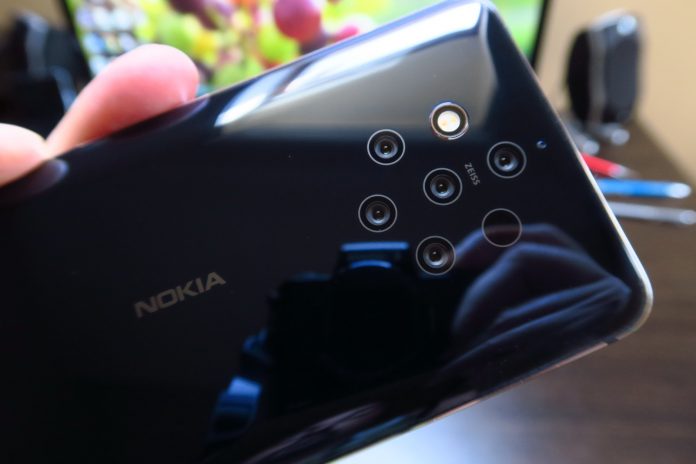
Selfies are taken with a 20 MP camera with Tetracell Pixel Binning, that combines pixels. The camera UI is minimal and hasn’t changed one bit from the Nokia 8, with the same useless Picture in Picture and Dual mode. There’s also Bokeh, Slow Mo, Time Lapse and a Pro mode, that lets you play with white balance, ISO, exposure and shutter.
You can do monochrome shots, Panoramas and everything feels sluggish. It takes forever to switch between options, to take pics sometimes and navigate in the UI. It’s painfully slow.

Now let’s see if the day time shots and gallery were any good. We started off in the city of Timisoara, where we caught a very nice texture of the flowers we captured. Then things started to be bad, as the zoom proved to be bad, very bad, as revealed by the shots of a boat on the river Bega. I’m talking about both the zoom you perform on the device and the level of details seen there and the zoom reflected on your PC.
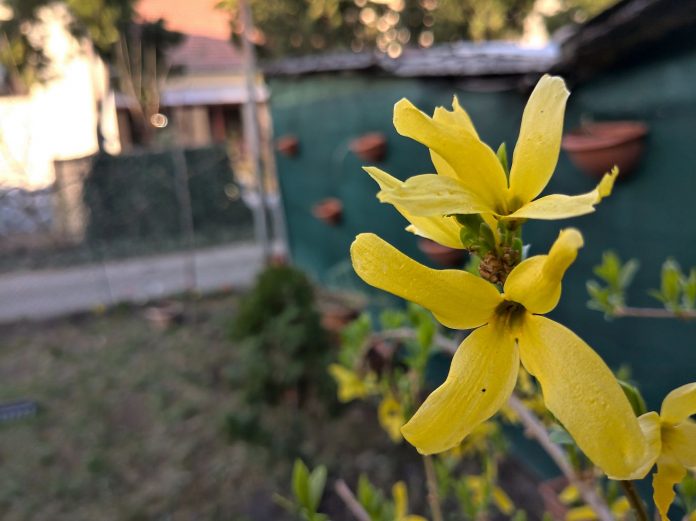
Bokeh was OK, but it feels like it’s made from software processing, rather than with the help of a depth sensor, odd as that may sound. Colors were pretty well calibrated and aligned with human perception, except for the sky, that was severely deformed. It was turquoise, or too white. If you carefully look at the trees in the distance you’ll spot that their branches can’t even be seen properly, which is a bit of a bummer.

I did like that castle in the park and this phone can capture some architectural traits pretty well, but none of the shots will endure the test of time. The Symbian Pureview produced some memorable results 7 years ago… The second part of the gallery feels a bit emo, dark, depressing. It’s not on account of the lack of colors, but rather the ways they’re portrayed.

Selfies were decent, if not a bit overexposed (background), but the details were solid. The monochrome captures were so bad, that they even felt inferior compared to the Huawei Mate 20 Pro or even the Huawei P10. Panorama was also modest, at 7120 x 1776 pixels. I noticed some faded cherry trees, but things got back on track when we reached that town fair.

I loved the chimes which were for sale and the way they are portrayed digitally. Colors were nice this time, but only if you weren’t there. In real life, they were much more vivid. It’s odd that the sky gets overexposed and the colors are muffled and flat… There were some decorations in Timisoara shown in the pics, prepared for Easter and they were 3 times more colorful in real life than in these shots, sadly.

Is there any point in talking about RAW capture and Lightroom editing? Who has time to do that on the phone? (Some pro examples here). What will you do if you run out of storage? Having tested the Nokia 8.1 days before the Nokia 9 Pureview, I’ll be the first to admit that the Nokia 8.1 is better in color calibration, Bokeh and details. There are soooo many phones better than the Nokia 9 Pureview. Have a look at the Nokia 808 Pureview shots here.

Huawei P30 Pro is so much better, iPhone XS Max too, the Galaxy S10 series, even the S10e and I can go on… Disappointing for sure. Is there any point in talking about the low light capture? There’s lots of blur and the flash made the scenery too white. The street light halos had a decent size and the level of yellow was pretty OK in my book. The zoom was rather weak, but the details were OK.
Look at the cubic stone on the ground and you’ll be reasonably satisfied. There’s some blur in the side and top parts of the pics and also some gray areas. Things aren’t memorable, that’s my main beef. Everything feels high midrange, not like a flagship. Yes, the church shots are impressive and there’s even plenty of details, but that’s not enough.
It’s very hard to ignore the noise in the background and the darker portions that would be very lit on a Galaxy S9 or Huawei Mate 20 Pro even. At least the separation between subject and background was done OK in the bokeh capture. I did find some lack of constance, since some street lights were yellow in some shots and orange in others…
Now let’s talk about the video capture. We started off with the stabilization test, done by shooting video while walking around. We found things to be shaky, not well stabilized, but the microphone felt solid. The trees were overexposed and the sky was white. I felt a bit of motion blur when panning and the zoom was underwhelming.
We’re off to a bad start… made worse by a crackling sound each time we start filming. The 4K clips were fine, I won’t lie, but once again the Nokia 9 Pureview IS NOT ABLE to render a proper blue sky. Most videos also felt dark and when the wind started, the microphone couldn’t handle it. I loved the water texture of the 4K capture, the shades of blue and we even had a nice Kurtos kolacs shown in action, with a palpable and palatable texture.
It’s all solid all around, but there will be no prizes awarded for this phone. Its 4K capture may barely placed it in the high end area, but not more. The level of noise in the background and fluctuation of brightness when moving around are huge problems. The focus was accurate and all and if you really want to film, stick to 4K and avoid zooming in.
When it comes to low light, the last time I was so disappointed by this was back in the days of the ASUS ZenFone 4. It’s a bad joke on Nokia 9 Pureview. Everything is shaky, the wrong shade of yellow and the flickers really annoy me. There are stripes all over the image, like a bug of sorts and things are much worse than on the Nokia 8.1. A sad and bitter disappointment…

Connectivity
On the connectivity front, there’s everything and the kitchen sink. There’s an USB Type-c port here, 4G LTE Category 16, NFC and WiFi dual band. There’s Bluetooth 5.0, GPS and the Nokia 9 Pureview comes in single SIM and dual SIM version. WiFi Direct is also here and we’ve got at least two mics, if not three. The calls were rather loud and clear, with a nice, full sound.
We also did a SpeedTest and achieved 235 Mbps in 4G download and 133 Mbps in upload. Also, during the WiFi test we achieved 405 Mbps in download and 26.1 Mbps in upload. All of these values are excellent.

OS, UI, Applications
As we’ve gotten accustomed to over the past years, Nokia has been working with pure Android. We’re talking about stock Android, part of the Android One project. There’s a Google feed as the leftmost homescreen, multitasking happens like on the Pixel 3, so it’s a set of cards scrolling horizontally, with a contextual popping Back button and a split screen gesture that needs one more icon tap.
If you keep the homescreen pressed you can trigger a set of stock widgets and also access the Home Settings, with Notification Dots and icon shape options. We don’t have any bloatware here and if you’re seen a clean Android Pie phone, you’ve seen them all. There’s Digital Wellbeing, if you’re feeling too attached to the the phone and some apps, that cause addiction.
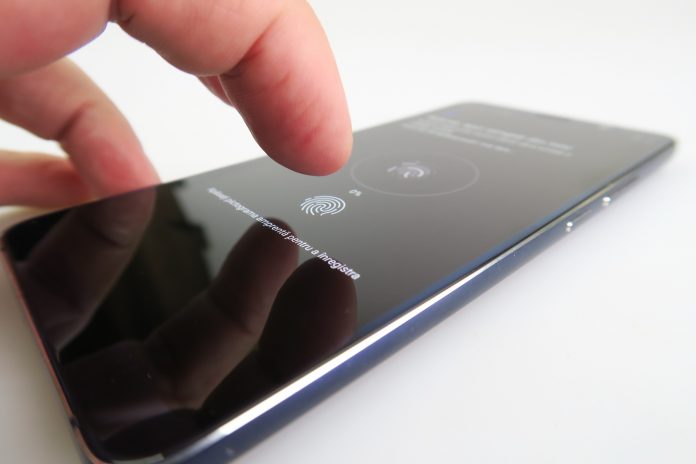
On the security front we’ve got a fingerprint scanner embedded in the screen, which is very, very slow when it comes to authentication. There’s also 2D Face unlock, but who wants that? Overall, a rather typical Android stock experience.
Verdict
Pro:
- good performance
- great display
- clean OS
- elegant design
- fast connectivity
- OK 4K video capture
- not bad selfies
- good picture clarity at the basic level
- nice price compared to other flagships
- RAW editing
- battery is just OK
Cons:
- no stereo speakers
- slow fingerprint scanner
- poor camera overall
- sluggish camera app
- no IP68 certification
- Snapdragon 845 CPU
- Ok battery is also a drawback nowadays (could be better)
- no microSD
- unimpressive speaker
- slippery
Nokia 9 Pureview has been stuck in development limbo for a long while now. It comes with problems for sure and its only selling point is probably… the screen, or maybe the 4K video capture. Performance is also high end material, but that’s pretty much it. The camera is too slow and sluggish, the pictures don’t look like much and this feels like the kind of phone to be smoked by Xiaomi Mi 9, which has a better price.
If you’re willing to settle with a merely good camera, when the Pureview brand commended “fantastic”, that’s on you. I’d buy the Nokia 8.1… If you do want the Pureview, you can get it here.

